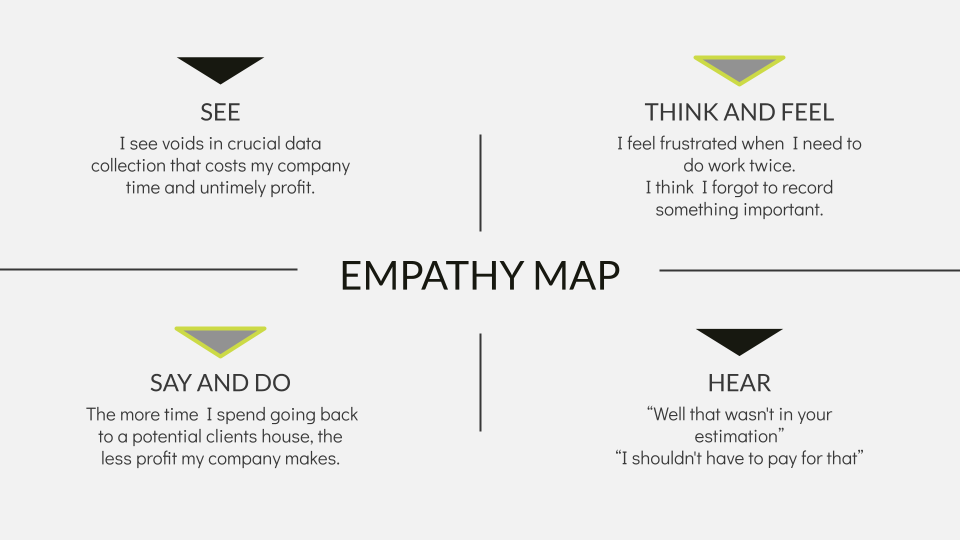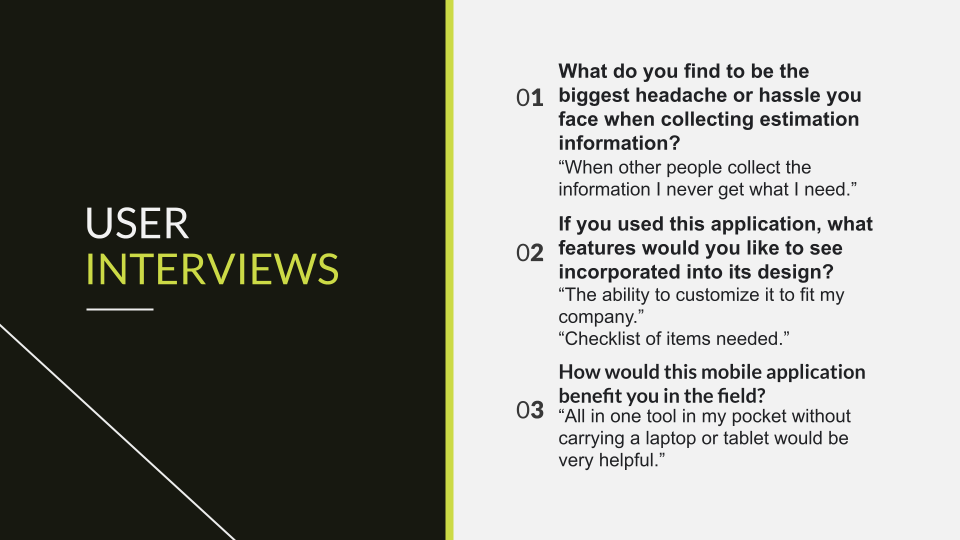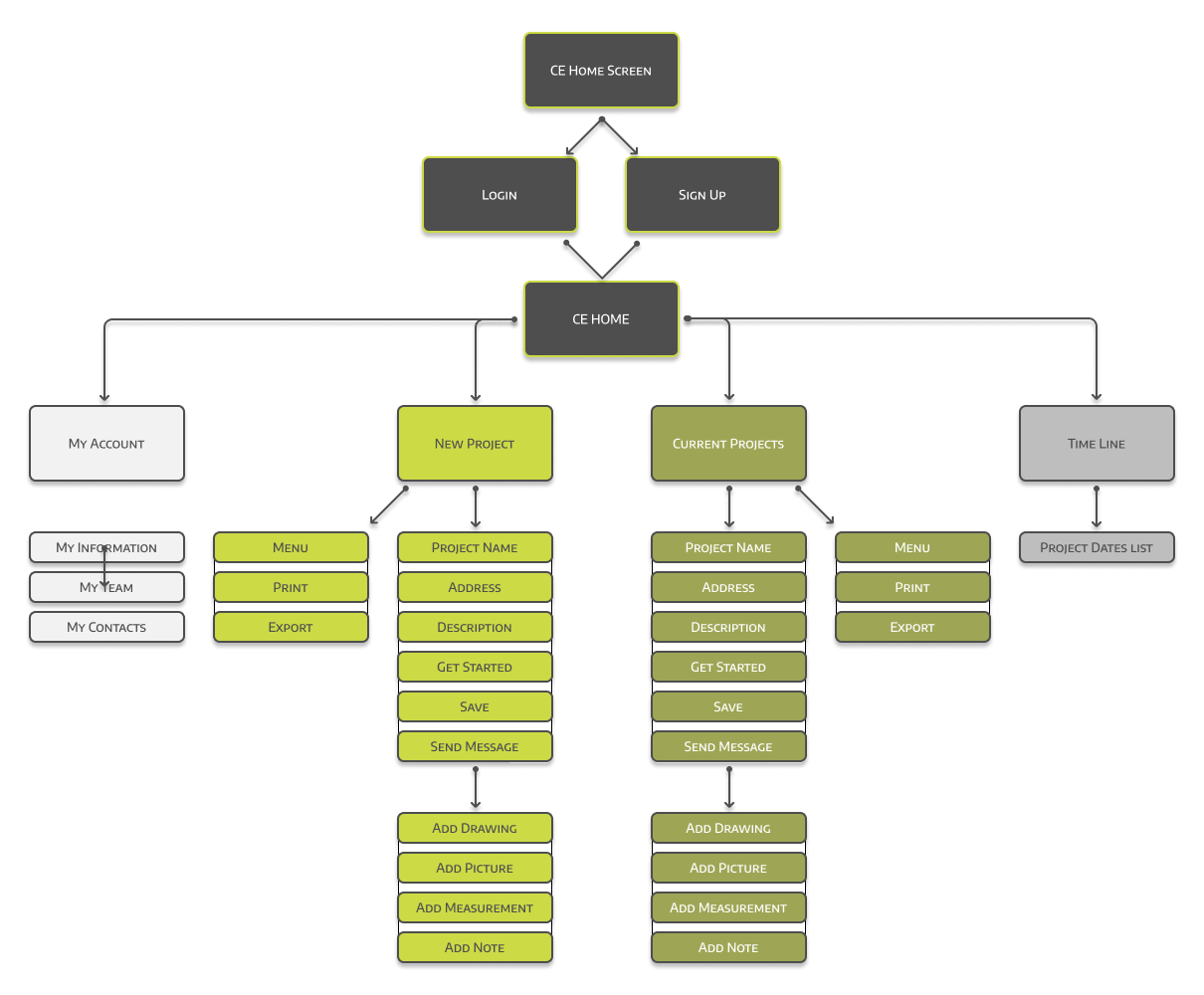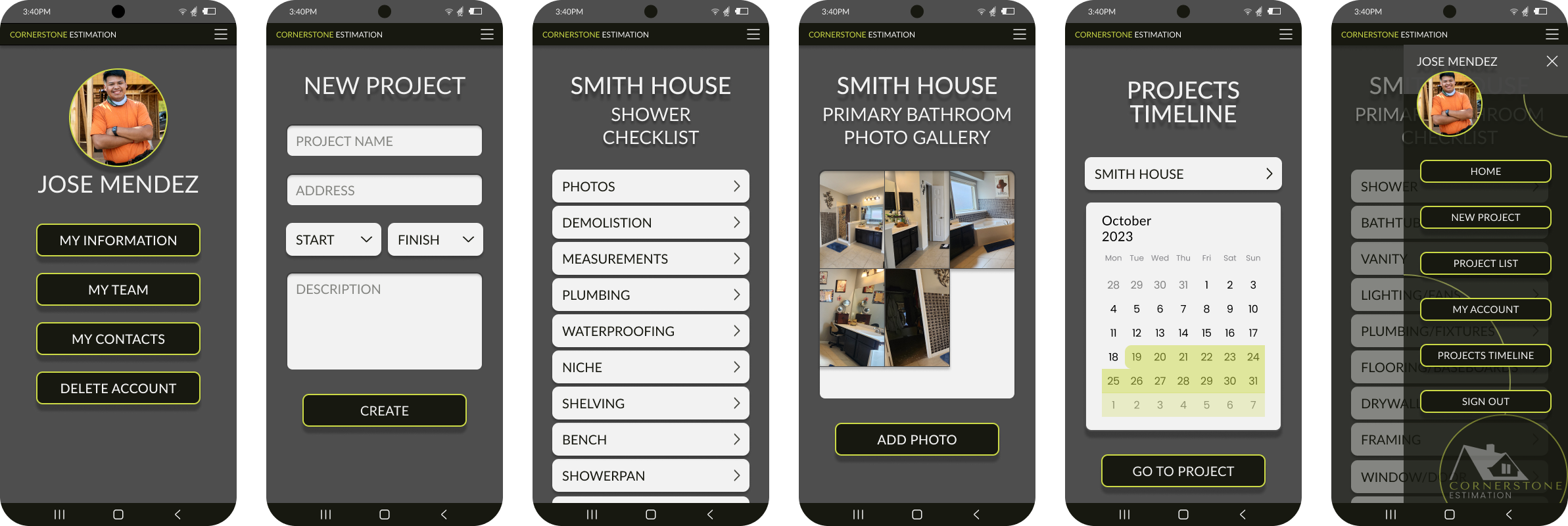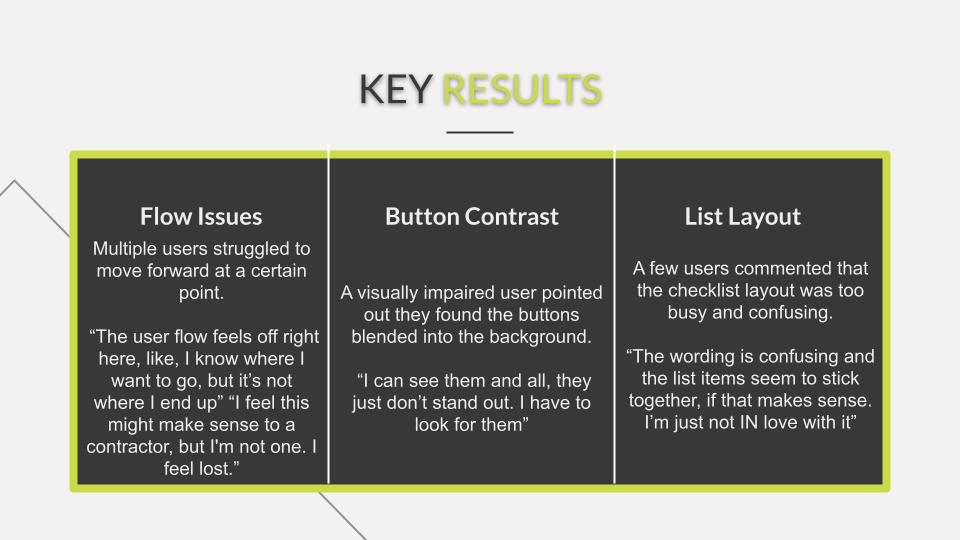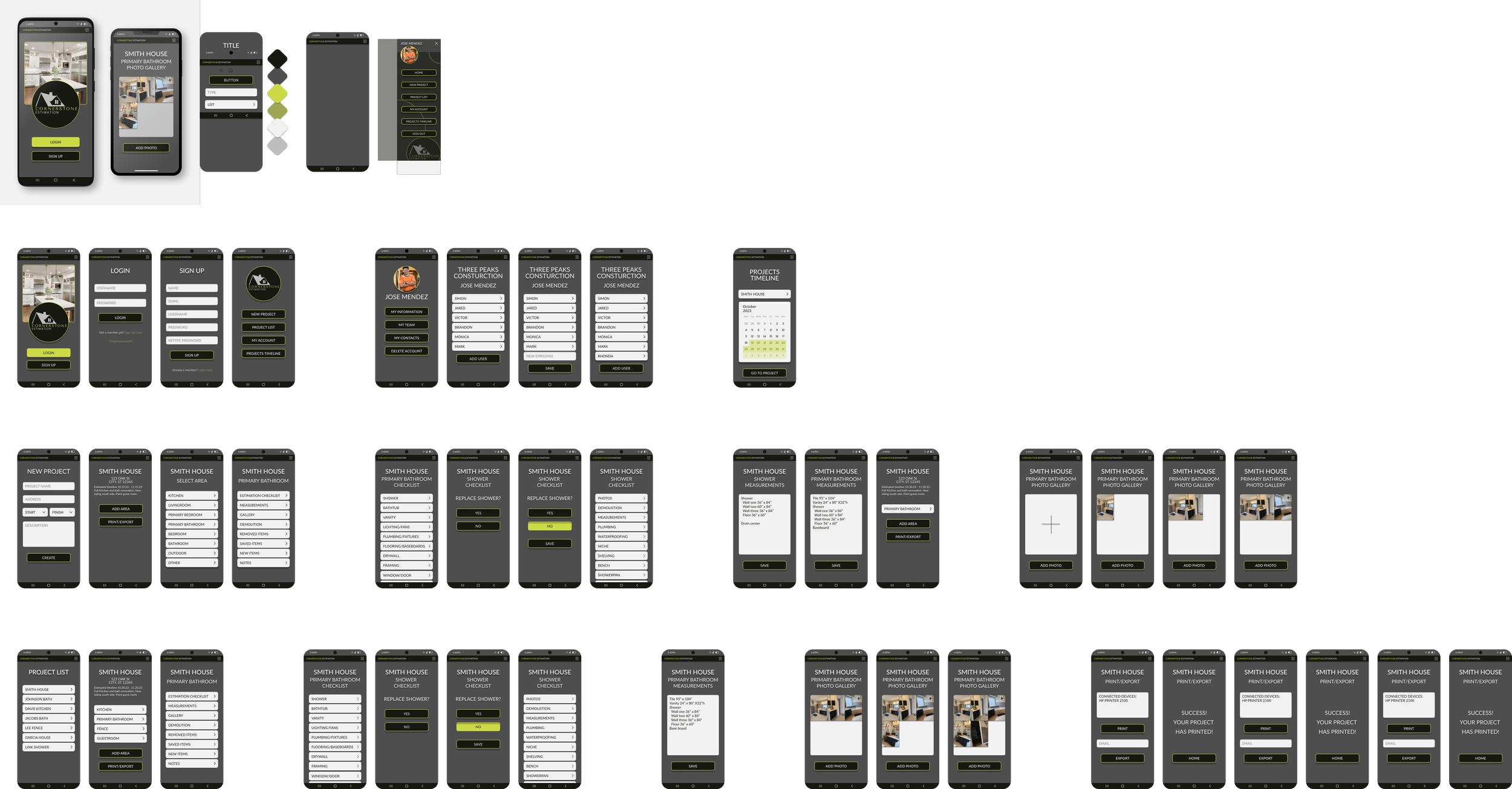The Client
Andrews Customs has been in the home renovation business for years. Bathrooms, kitchens, flooring and fences. Two generations of quality control, craftsmanship, and pride can transform the ordinary into extraordinary. Booming business brings a world of growing pains. Every contractor knows, that to stay competitive you need hardworking skilled trades workers and the right tools for the job!
Overview
The Problem
Most contractors use only their knowledge, a pen and paper, and a tape measure during the estimation process. This can work for most situations, though all it takes is one overlooked aspect of a project, one missing measurement, or an employee not trained correctly, and the results can be devastating such as unnecessary trips back to the project or even worse, going over budget and losing money for both the client and the contractor.
Customizable checklist
Ability to record, access, update, and share project information instantly
Simplicity for all users
Client Requirements
The Solution
Design an estimation application designed to assist contractors and help employees collect, organize, and maintain information from the first measurement to the final bill.
Customizable estimation checklist that can fit the needs of a one-person show or a multimillion-dollar business.
Create a way to record project measurements, take reference photos, share project specifications and details with employees and subcontractors instantly, and export and print via the cloud.
The Process
Learn About the User
Determine Features
Brainstorm Solutions
Simulate User Experience
Validate with User
Who are we here to help?
The persona of a contractor dedicated to making his business grow!
User Stories
Created to understand a daily occurrence in the life of our users.
Deigo is a highly motivated contractor looking to take his business to the next level. He has been working very hard to ensure his crews have the work they need to keep his business growing. Today he will use Cornerstone Estimation to add a reference photo of a bathroom for a potential project.
Deigo opens the Cornerstone Estimation app. Low Priority
He signs in. Medium Priority
He clicks on the New Project. Low Priority
He fills out the project info and clicks create. Medium Priority
He chooses Primary Bathroom from his list. Low Priority
He clicks on Gallery from the list. Medium Priority
He adds the photos to the gallery High Priority
Deigo can now share the photos with his estimation team via Cornerstone!
What problems are they facing?
Empathy Maps are designed to get in touch with user behaviors and feelings. To help me understand their motivations, concerns, and experiences.
Competitive Analysis
I looked into two contracting applications to better understand what other applications are doing well and what could be approved upon. I selected Jobber because it’s very popular in the industry. I also chose Contractor Estimation & Invoice hoping for something geared more towards just the estimating side of business.
Sketches
A simple mobile sketch to get a realistic feel of the way the application should work.
User Interviews
User Surveys
Conducting user interviews lets me hear directly from the specific group of people I am aiming to help.
Some key points I took away from this process are that 90% of those interviewed stated they usually go into an estimation situation Using only a pen, paper, and measuring tape. Over half of them admitted to having missed or incomplete information after the estimation and needing to return to the project a second or third time before completion. Over a third of those contractors have no uniformed checklist to work from.
User Flows
As a contractor, I want the ability to customize an estimation checklist to fit my company’s dynamic so that I can make accurate estimations confidently and efficiently.
As a contractor, I want the ability to have a uniform estimation process across the whole company, so I can be certain the same information is being collected whether its my myself or a new hire.
As a contractor, I want the ability to record and share measurements, photos, and project information with my employees and subcontractors instantly, so that we can all be on the same page.
Sitemap
A simple visualization of how one would navigate the application.
Moodboard
My mental image of the application as a visual representation.
Wireframes
Developing a prototype based on thoughts and ideas.
Mobile Paper Prototype
Through the creation of a paper prototype, I am able to gain a better understanding of the flow of the application by physically navigating the design.
Clickable Prototype
A visual presentation with color, shapes, and images enhances the clarity of my prototype.
The Test
Why we test?
Can users navigate the application to record measurements, add photos, export content, and access project information?
Is the flow of the application helpful to contractors and workers?
Is this a useful tool in the eyes of the men and women in residential and commercial construction?
I worked through multiple flow difficulties by creating a few new pages or navigational options. The button contrast was an easy fix. Pop of color here or a simple fill color to show hierarchy. Restructuring the list format gave it a much needed boost in over all look and accessibility.
I feel between my industry knowledge and the group of professionals I user-tested with, I can confidently say we covered the most known issues thus far. I know once in a working situation some things may have been overlooked and can be corrected effectively. I feel confident in my understanding of the design process. I am very excited about this product and feel it can be brought to the public.
The Prototype
The next step was to present the client with a High Fidelity Prototype. Small changes help bring a more user-friendly product to the table
The goal here was to make a product geared toward senior citizens. Easy to read, simple to navigate, and visually accessible.
Next Steps
I am very excited about this product and feel it can be brought to the public. I will be continuing with Cornerstone Estimation to see it through. The next step is to find out how I get a usable working app for some of my peers to use for free in exchange for testing feedback in real-world situations.
This project means a lot to me mostly because as a former contractor, I know how important this application could be in the lives and businesses of my friends and family. I spent countless hours making unnecessary trips for both companies I was employed for, and my personal business, not to mention thousands of dollars lost. I believe I was able to design something that can actually fill a void in the industry. I wasn't sure if I was the only one struggling with this problem, so I was a little leary to take on this project at first. After all my research I concluded not only did most people share my problem but it was larger than I had imagined. If I had more time, I would like to add a way to incorporate client payment options into the app. That way one could use the application from the very beginning to job completion. All in one spot!
I feel with this project I learned it's not always a large design problem you may face or some massive change you need to make. Sometimes just adding a small detail here or there can drastically change the flow and direction of the app.







